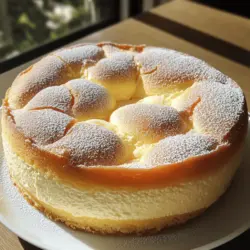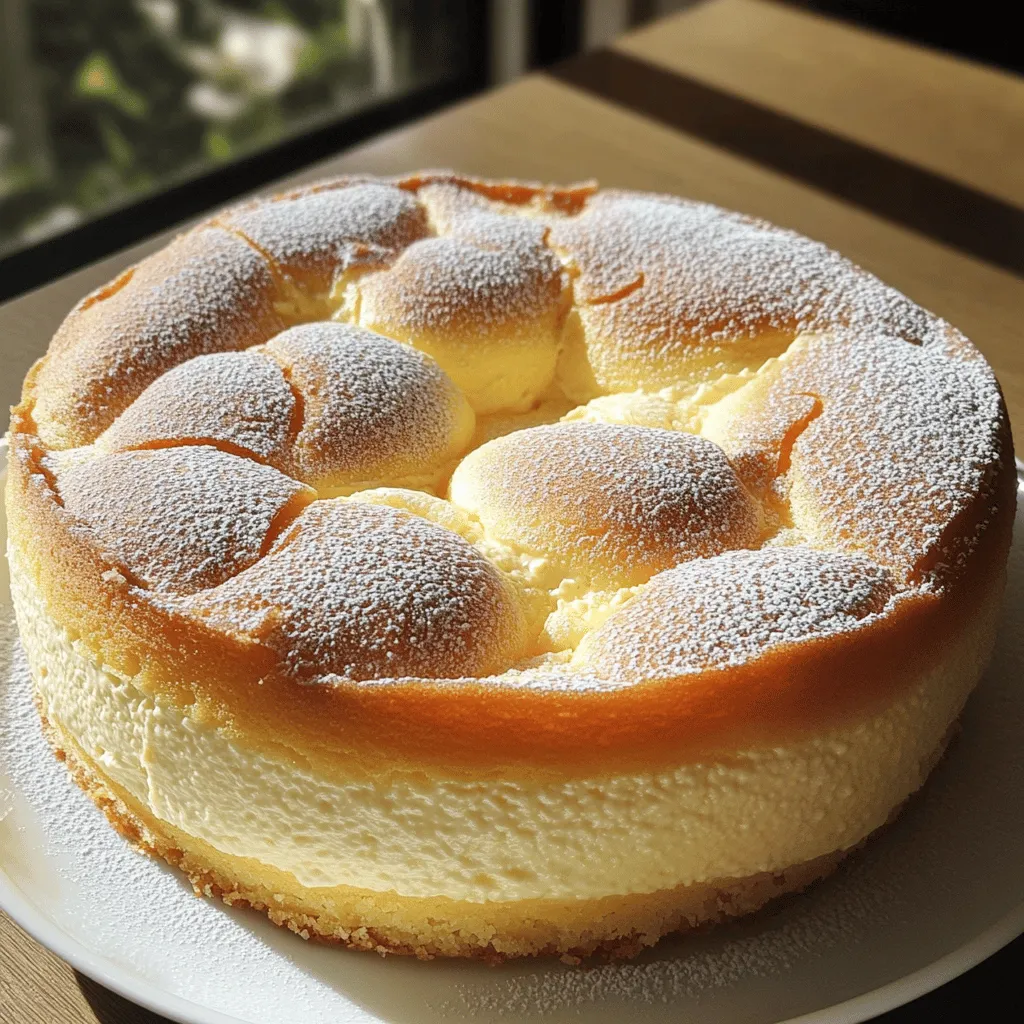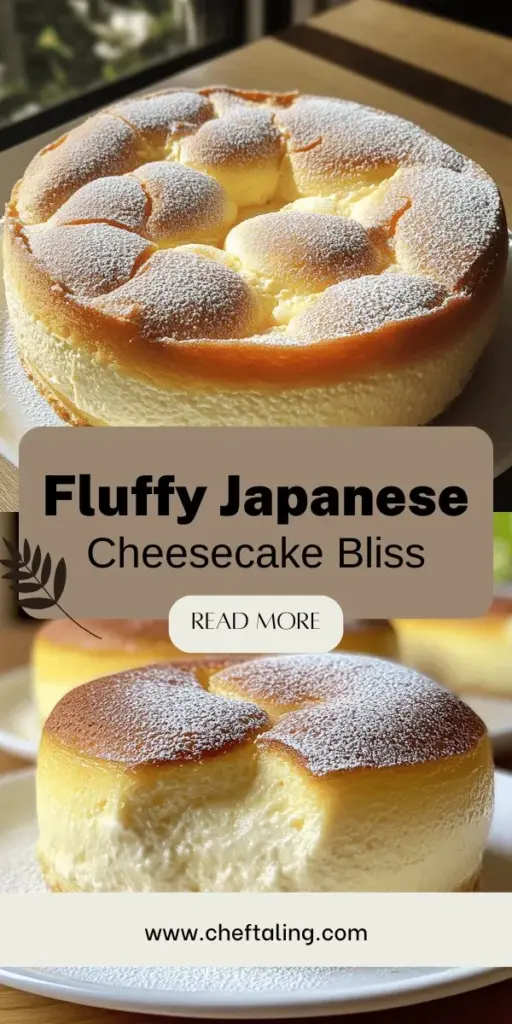Japanese cheesecake is a must-try if you love desserts. This fluffy delight offers a light texture that sets it apart from its American counterpart. Imagine slicing through a cheesecake that feels like a cloud! In this article, I will guide you through its unique qualities, share a simple recipe, explore fun flavor variations, and even highlight serving suggestions. Ready to learn about this delightful treat? Let’s dive in!
What is Japanese cheesecake and how does it differ from American cheesecake?
Japanese cheesecake is light, airy, and fluffy. It stands apart from the dense and rich American cheesecake. The texture is more like a soufflé than a cake. This unique fluffiness comes from whipped egg whites. In American cheesecake, cream cheese is the star, giving it a creamy bite.
The differences between Japanese and American cheesecake start with ingredients. Japanese cheesecake uses light cream cheese, milk, and vegetable oil. American cheesecake often relies on heavy cream and sour cream. This leads to two very different textures.
Japanese cheesecake has a soft, spongy feel. It jiggles gently when you shake it. American cheesecake is thick and creamy, with a firm crust. When you cut into Japanese cheesecake, it feels like a cloud. American cheesecake offers a rich, buttery experience.
The key ingredients also set these two styles apart. Japanese cheesecake combines cream cheese, sugar, and flour. It uses cornstarch instead of heavy cream. The result is a dessert that melts in your mouth.
If you want to try making this delightful treat, you can follow the Full Recipe.
How do you make a delicious Japanese cheesecake from scratch?
To make a delightful Japanese cheesecake, follow these steps closely.
First, gather your ingredients. You will need cream cheese, sugar, milk, vegetable oil, vanilla extract, eggs, flour, cornstarch, and salt.
Next, preheat your oven to 320°F (160°C). Grease your cake pan and line the bottom with parchment paper. This will help your cake come out easily later.
In a bowl, mix the softened cream cheese with 1/4 cup of sugar. Use a handheld mixer for a smooth blend. Then, add milk, oil, and vanilla. Mix well until combined.
Now, sift in flour and cornstarch. Add salt and mix just until blended.
In another bowl, beat the egg whites until frothy. Gradually add the remaining sugar. Keep beating until you see stiff peaks. This step is key for that fluffy texture.
Gently fold the egg whites into the cream cheese mix. Do this in three parts to keep the air in.
Pour the batter into your prepared pan. Smooth the top. Place this pan in a larger one filled with hot water. This water bath method helps the cake bake evenly.
Bake for 50-60 minutes. The top should be golden, and it should jiggle slightly when done.
After baking, turn off the oven and leave the cake inside for about 30 minutes. This cooling step helps prevent cracks.
Once it cools to room temperature, refrigerate the cheesecake for at least four hours. For best results, chill it overnight.
When ready to serve, run a knife around the edge to loosen it. Flip it onto a plate and remove the parchment paper.
Dust the top with powdered sugar before cutting it into slices.
For a full recipe, check out the detailed steps. Enjoy your fluffy Japanese cheesecake!
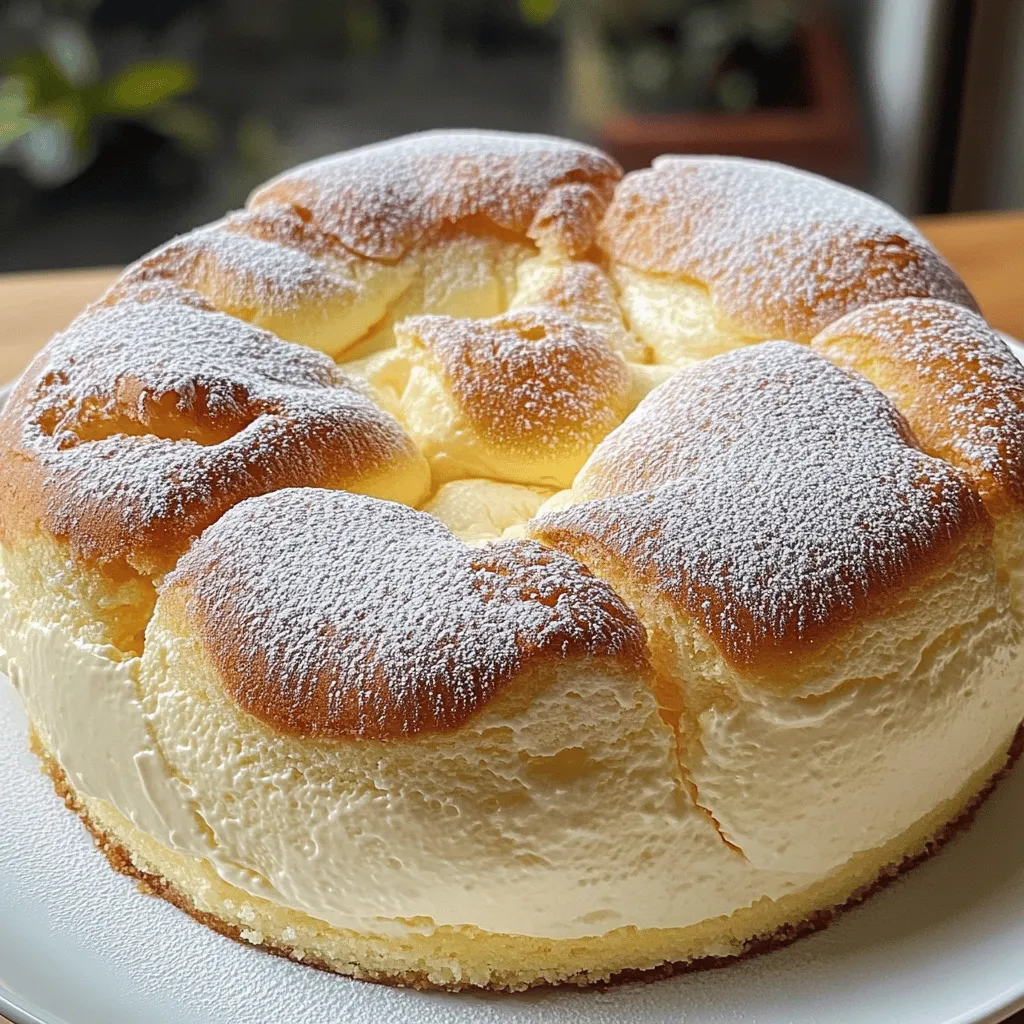
What are some popular variations and flavors of Japanese cheesecake?
Japanese cheesecake has many fun twists. You can try flavors like matcha, chocolate, or mango. These infusions offer a unique taste. Matcha adds a rich, earthy note. Chocolate brings a sweet, creamy flavor. Mango offers a bright, fruity touch.
You can also make a lemon version. Just add lemon zest and juice to the batter. This will give it a fresh, zesty kick. Another common twist is adding a swirl of fruit puree. You can use strawberries or blueberries for a fruity blend.
To adapt the classic recipe, think about your favorite flavors. Want a nutty taste? Add ground almonds or hazelnuts. Love coffee? Mix in instant coffee granules. The possibilities are endless!
You can also explore regional variations. Some areas in Japan use local ingredients. For example, in Hokkaido, they might use fresh dairy from local farms. This creates a creamier, richer cheesecake.
No matter the flavor, Japanese cheesecake remains light and fluffy. Each variation keeps that signature texture. For the full recipe, check out the details above and enjoy!
What are the best serving suggestions for Japanese cheesecake?
To serve Japanese cheesecake, keep it simple to highlight its soft texture. You can slice it into wedges and dust it with powdered sugar. This adds a touch of sweetness without overwhelming the flavor.
What toppings enhance the flavor of Japanese cheesecake?
Fresh fruits are excellent toppings for Japanese cheesecake. Strawberries, blueberries, or raspberries add a burst of color and taste. You can also use whipped cream, which brings creaminess to each bite. For a unique twist, try a drizzle of matcha or caramel sauce.
How can you pair Japanese cheesecake with beverages?
When selecting drinks, consider light options. Green tea works well, as it balances the sweetness. A cup of coffee also pairs nicely, offering a warm contrast. For something cold, a light sparkling drink can refresh your palate.
What are some creative presentation ideas for serving cheesecake?
To impress guests, plate the cheesecake on a colorful dish. Add mint leaves or edible flowers for a pop of color. You can also create a dessert board with slices of cheesecake, fruits, and small jars of sauces. This makes for a fun and inviting display.
Enjoy your Japanese cheesecake with these tips, and remember to have fun with your presentation! For a full recipe, check out the instructions provided earlier.
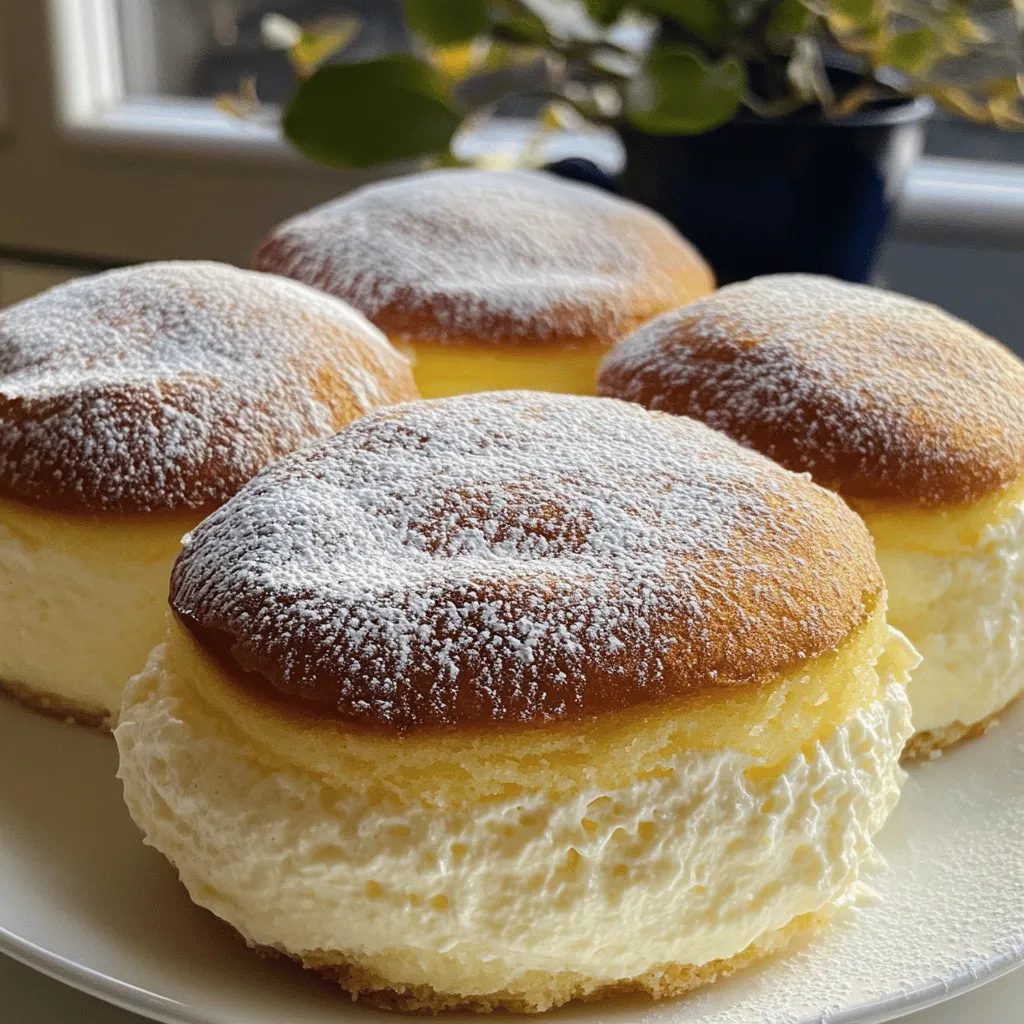
What are some common mistakes to avoid when making Japanese cheesecake?
Making Japanese cheesecake can seem easy, but common mistakes can ruin your dessert. Here are some pitfalls to avoid during the baking process.
What are the common pitfalls to watch out for during the baking process?
One big mistake is not preheating your oven. If your oven is not hot enough, the cheesecake may not rise well. Another pitfall is not using a water bath. This method helps keep the cheesecake moist and gives it a fluffy texture. Skipping the cooling phase can also lead to cracks. Let your cheesecake cool slowly in the oven before taking it out.
How can you troubleshoot issues with texture or flavor?
If your cheesecake is dense, you might have overmixed the batter. Mix gently when folding in the egg whites. If it tastes bland, check your ingredients. Fresh cream cheese and good quality vanilla make a big difference. If the cheesecake is too sweet, reduce the sugar by a little next time. For a rich flavor, try adding a bit of lemon juice or zest.
What equipment is essential for making a perfect cheesecake?
You need a few key tools to make your cheesecake shine. A good mixing bowl and a handheld mixer help you mix the ingredients well. A sturdy 8-inch round cake pan is crucial for baking. Don’t forget parchment paper! It ensures your cheesecake comes out easily. Finally, a large roasting pan is needed for the water bath method. For the full recipe, check out the instructions above.
What is the history and cultural significance of Japanese cheesecake?
Japanese cheesecake has roots in Western baking. It arrived in Japan in the early 20th century. Chefs began to adapt the recipe to local tastes. This cheesecake became lighter and fluffier. It uses less cream cheese than its American counterpart. The Japanese version incorporates meringue for airiness.
Cheesecake enjoys a special place in Japanese culture. It is often served during celebrations and gatherings. People appreciate its delicate texture and mild flavor. Family and friends bond over a slice. This dessert symbolizes warmth and togetherness.
Japanese dessert traditions have deep influences. They blend Western techniques with Japanese sensibilities. Ingredients like matcha and seasonal fruits often appear. These changes reflect Japan’s respect for nature and seasons.
The history of Japanese cheesecake shows how cultures can mix. It stands as a testament to Japanese culinary heritage. I recommend trying the Full Recipe to experience this unique dessert.
Japanese cheesecake is light and fluffy, unlike its denser American cousin. This unique dessert uses simple ingredients and offers various flavors. Making it requires careful steps to achieve that perfect texture. Remember to avoid common baking mistakes for the best results. In Japanese culture, cheesecake holds a special place and reflects culinary traditions. Try different toppings and pairings to make it truly special. Explore this delightful dessert, and enjoy each bite!
